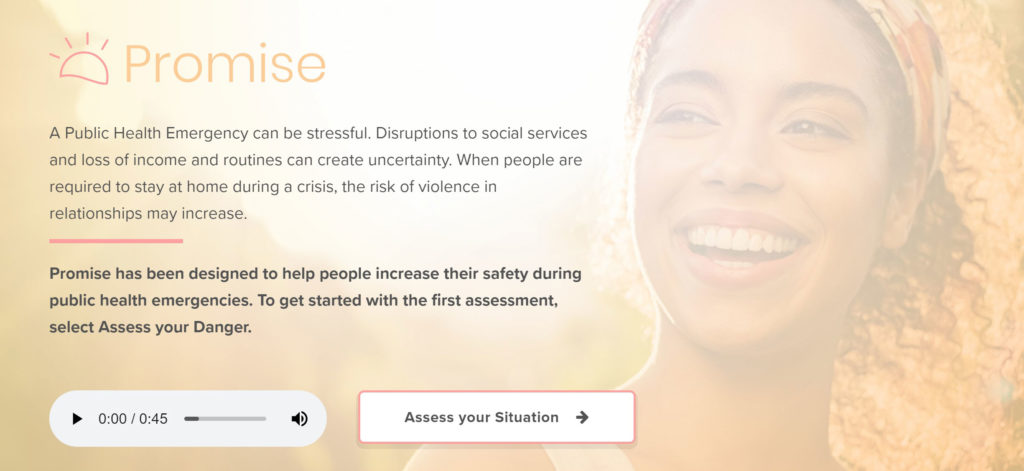This study is part of the MAP/St. Michael’s Hospital Foundation COVID-19 Catalyst Fund, launched to advance our most urgent priority projects. Learn more
News: MAP launches the PROMISE App
We recently launched an app called PROMISE (Promoting Safety During Emergencies), for women who are experiencing intimate partner violence during public health emergencies. The app helps women assess and increase their safety when stay-at-home restrictions are in place.
About This Project
Early reports from China and Europe suggest upwards of a three-fold increase in intimate partner violence in the wake of the COVID-19 pandemic. In Canada, a similar spike is likely taking place; job losses, school closures, financial instability, and social isolation have all been linked to increased intimate partner violence risk for decades.
Physical distancing requirements are preventing many community services and health-care providers from reaching and developing safety plans (i.e. detailed plans for the logistics of leaving an abusive partner) for women living with intimate partner violence. What’s more, safety planning strategies that are appropriate for times of public health emergencies do not currently exist. New solutions are urgently needed.
Technology based safety-planning for women and children living with violence
In consultation with service providers and survivors, we rapidly reviewed the literature and generated new best practices for safety planning during the pandemic. We then put these strategies into practice via our new PROMISE app, based on our pre-pandemic WITHWomen Pathways app.
The PROMISE app is being launched throughout greater Toronto and Hamilton, Ontario through a social media campaign. Simultaneously, we are developing and distributing toolkits for health-care providers who can use the Pathways app to screen women for IPV and connect them with in-person and telehealth services.
This solution could be scaled up to address intimate partner violence worldwide. We will make the code and design of the PROMISE app widely available for anyone to adapt to their local setting.
The Outcome
Our findings and technology could help support and protect hundreds of women and children during this critical time, and will provide lessons — and code — to enable service access during future public health crises around the world.


